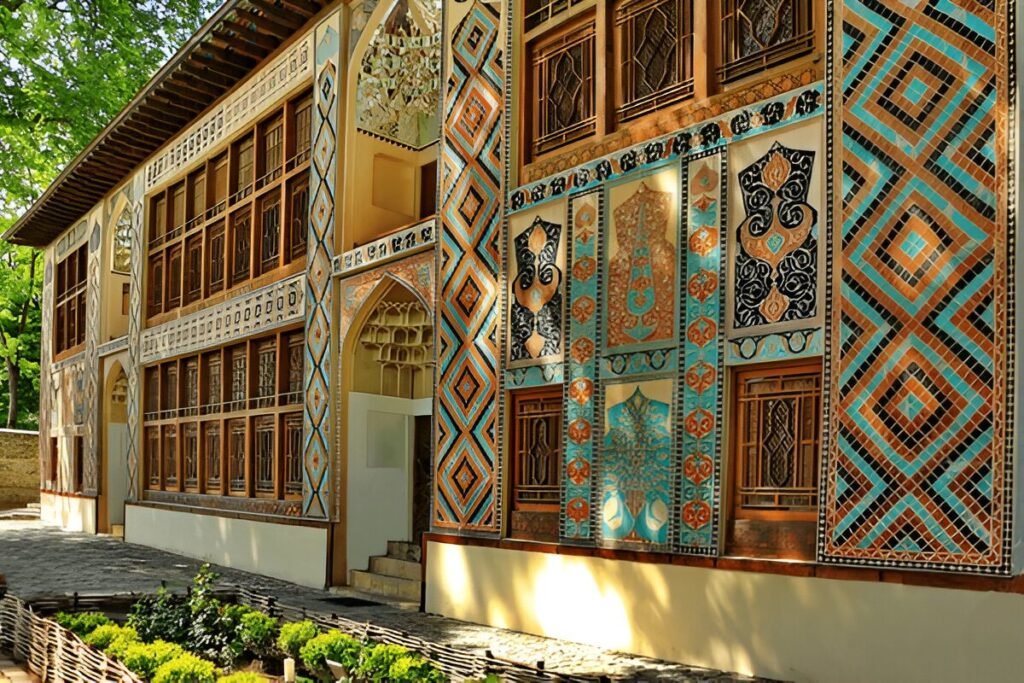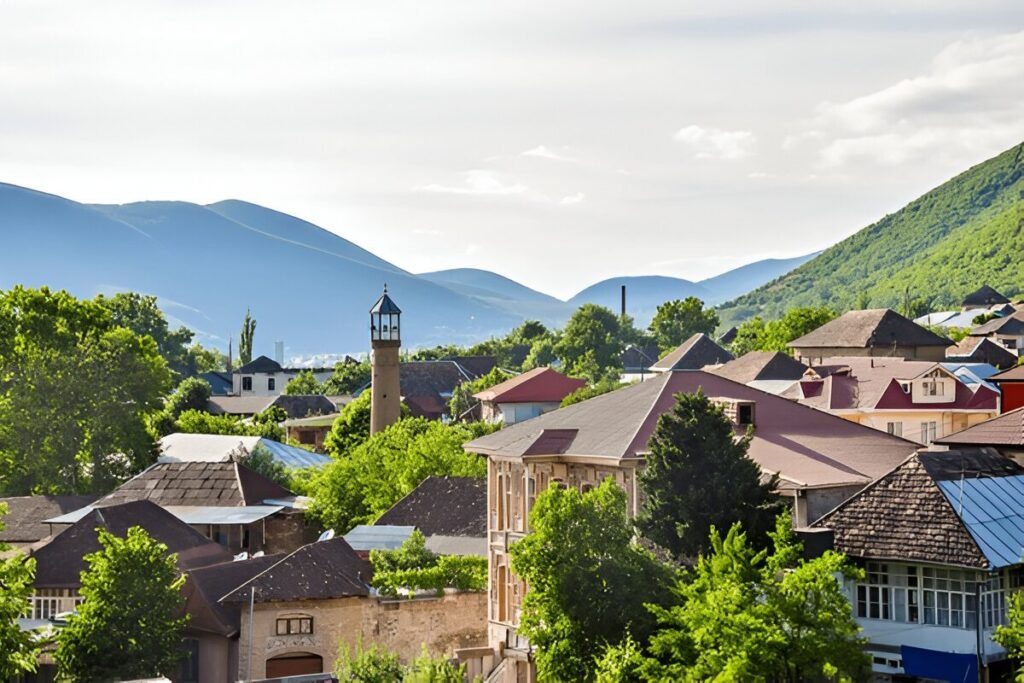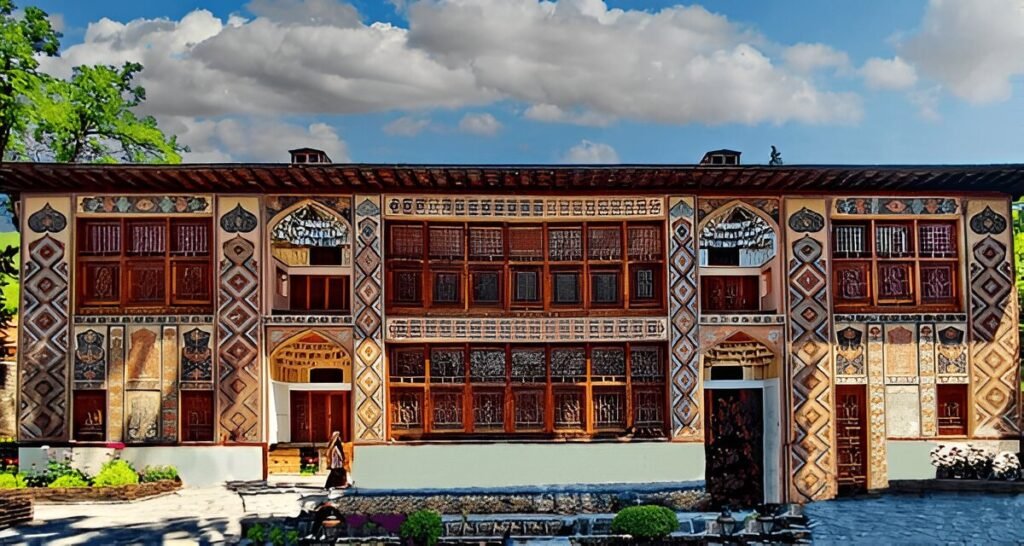Introduction
Nestled in the picturesque town of Sheki, Azerbaijan, the Sheki Khan’s Palace stands as a masterpiece of architectural brilliance and historical significance. Built in the 18th century, this UNESCO World Heritage site epitomizes the rich cultural heritage of Azerbaijan and serves as a symbol of artistic and architectural ingenuity. Renowned for its intricate stained-glass windows, frescoes, and elaborate wooden carvings, the palace attracts visitors from around the world who seek to immerse themselves in its timeless beauty. This blog will explore the history, architecture, and cultural importance of Sheki Khan’s Palace, revealing why it is one of the most treasured landmarks in Azerbaijan.
A Glimpse into the History of Sheki Khan’s Palace
The Sheki Khan’s Palace, or “Shaki Khansarai,” was built in 1797 during the reign of Muhammed Hasan Khan, one of the last rulers of the Sheki Khanate. The palace was part of a larger complex that served as the residence of the Sheki Khans, rulers of a semi-independent state that existed during the 18th and early 19th centuries.
Located at the foot of the Greater Caucasus Mountains, the palace’s strategic location ensured both security and breathtaking views of the surrounding landscape. The khans used the palace not only as a residence but also as a place to conduct administrative duties and entertain esteemed guests. Despite political turmoil and changes in rulers, the palace has withstood the test of time and remains an enduring symbol of Sheki’s rich history.
Architectural Brilliance: A Fusion of Styles
 The Sheki Khan’s Palace is celebrated for its unique architectural style, which combines Persian, Ottoman, and local Azerbaijani influences. The two-story structure, measuring 32 meters in length and 8.5 meters in width, was constructed without the use of nails, showcasing the extraordinary craftsmanship of local artisans.
The Sheki Khan’s Palace is celebrated for its unique architectural style, which combines Persian, Ottoman, and local Azerbaijani influences. The two-story structure, measuring 32 meters in length and 8.5 meters in width, was constructed without the use of nails, showcasing the extraordinary craftsmanship of local artisans.
- The Shebeke Windows
One of the most striking features of the palace is its shebeke windows. These stained-glass windows, made from thousands of small pieces of colored glass set into wooden lattice frames, are a hallmark of Azerbaijani craftsmanship. The windows are assembled without glue or nails, relying solely on the precision of the artisans. The kaleidoscope of colors created by sunlight streaming through the windows adds an ethereal quality to the palace interiors. - Exquisite Frescoes
The walls and ceilings of the palace are adorned with intricate frescoes that depict floral motifs, hunting scenes, and battle narratives. These frescoes, painted using natural dyes, reflect the artistic sensibilities of the era and provide insights into the cultural and social life of the Sheki Khanate. - Wooden Carvings and Ornate Details
The palace features intricately carved wooden doors, panels, and columns, showcasing the skill of Azerbaijani woodworkers. The delicate carvings are not merely decorative but also serve to highlight the seamless blend of art and functionality in the palace’s design. - Symmetry and Balance
The layout of the palace emphasizes symmetry and balance, with each room designed to serve a specific purpose. The central hall, flanked by smaller rooms on either side, is a testament to the architectural precision and thoughtful planning that went into the palace’s construction.
Cultural Significance of Sheki Khan’s Palace
 The Sheki Khan’s Palace is more than just an architectural marvel; it is a cultural treasure that reflects the history and traditions of Azerbaijan.
The Sheki Khan’s Palace is more than just an architectural marvel; it is a cultural treasure that reflects the history and traditions of Azerbaijan.
- A Window into the Past
The palace offers a glimpse into the opulent lifestyle of the Sheki Khans and the socio-political dynamics of the 18th century. The frescoes and decorations serve as visual narratives of the region’s history, capturing moments of triumph, celebration, and daily life. - A Center for Art and Craftsmanship
The construction and restoration of the palace have kept traditional Azerbaijani art forms, such as shebeke-making and fresco painting, alive. These crafts continue to be passed down through generations, preserving the legacy of the palace and its artisans. - UNESCO Recognition
In 2019, Sheki and the Sheki Khan’s Palace were inscribed on the UNESCO World Heritage List, a testament to their outstanding universal value. This recognition has brought global attention to the site, boosting tourism and fostering greater appreciation for Azerbaijani culture and heritage.
The Palace in Modern Times
Today, the Sheki Khan’s Palace is a major tourist attraction and a source of national pride. The Azerbaijani government has undertaken extensive restoration efforts to preserve the palace’s original beauty and ensure its longevity.
Visitors to the palace can explore its stunning interiors, admire the craftsmanship of the shebeke windows, and learn about the history of the Sheki Khanate through guided tours. The palace also hosts cultural events and exhibitions, further cementing its role as a hub of art and heritage.
Exploring Sheki: Beyond the Palace

While the Sheki Khan’s Palace is undoubtedly the highlight of any visit to Sheki, the town offers much more to discover.
- Caravanserais
Sheki is home to well-preserved caravanserais, ancient inns that once served as rest stops for Silk Road travelers. The Upper and Lower Caravanserais, located near the palace, are architectural gems in their own right. - Local Cuisine
No trip to Sheki is complete without sampling its traditional cuisine. Piti, a slow-cooked lamb and chickpea stew, is a local specialty that reflects the town’s culinary heritage. - The Sheki Silk Factory
Sheki has a long history of silk production, and the Sheki Silk Factory continues this tradition. Visitors can witness the silk-making process and purchase handmade silk products as souvenirs.
Conclusion
The Sheki Khan’s Palace is a testament to the ingenuity, artistry, and cultural richness of Azerbaijan. Its breathtaking architecture, intricate details, and historical significance make it a must-visit destination for travelers seeking to explore the country’s heritage. Beyond its visual splendor, the palace serves as a symbol of Sheki’s enduring legacy and the timeless beauty of Azerbaijani craftsmanship.
For those who journey to Sheki, the palace offers an unforgettable experience—one that transports visitors back in time and leaves them in awe of the artistic and architectural wonders of this historical gem.












